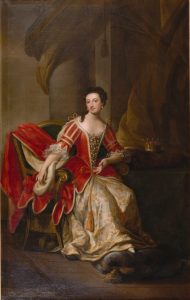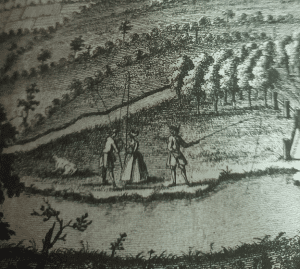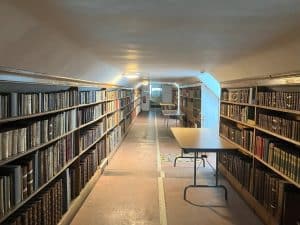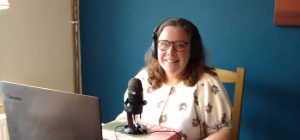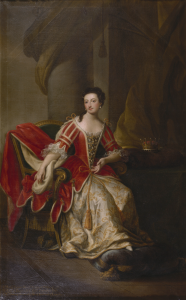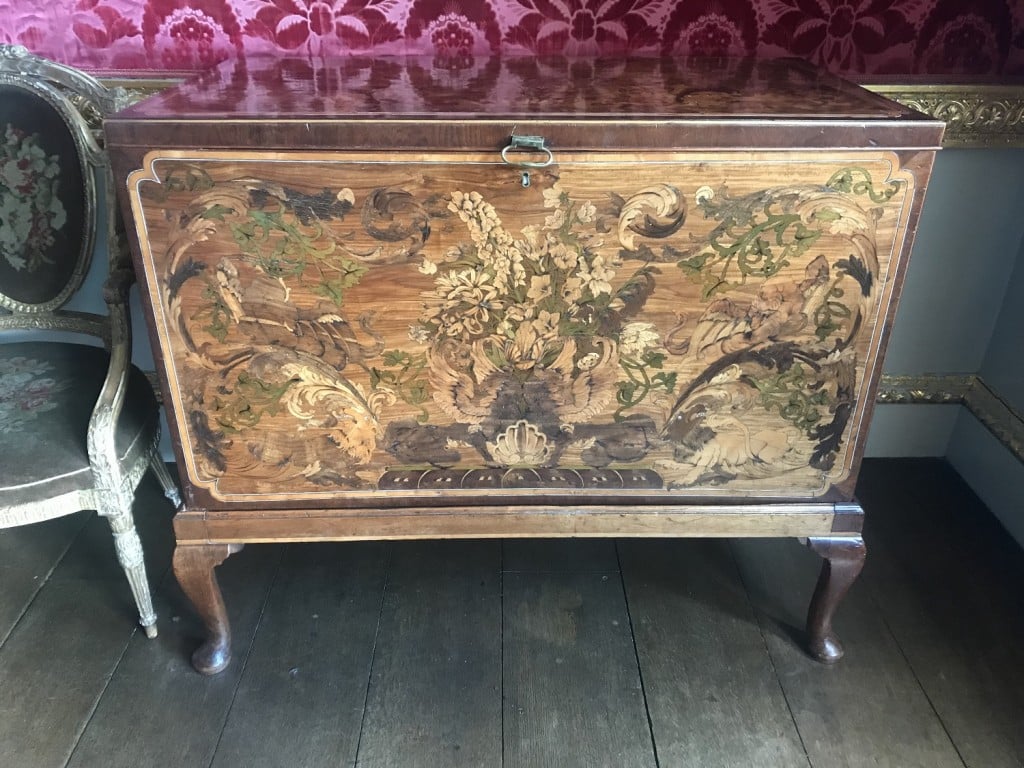
Great masters of cabinet-making at Holkham Hall
March 4, 2021 | Treasure tales and archive snippets | 9 minute read

Pietro Piffetti (1701-1777) is universally regarded as one of the greatest cabinet-makers of all time.
A true mystery surrounds the first thirty years of his life: born in Turin, he seems to re-emerge from nowhere in 1730, in Rome, when he was recalled home by the King Charles Emmanuel III of Savoy to hold the position of “Cabinet-maker of His Majesty”.
A document of 1763 certifies that Piffetti’s apprenticeship took place in Turin, with numerous indications pointing to the workshop of the Venetian master Ludovico De Rossi. However, scholarly attention has always been directed to his stay in Rome, during which time the Piedmontese cabinet-maker became a real artist. Who was the master who accompanied this talent from Piedmont in his path of artistic growth in the Eternal City?
Two tables realized in 1731 by Pierre Daneau for the Barberini, a noble Roman family, connect Piffetti with this young cabinet-maker. Daneau was born in Paris around 1709 and was present in the papal city from 1725 to complete his training. The professional relationship between Daneau and Piffetti is indisputable, but in 1730 Daneau was a little over 20 years old, making it impossible that Piffetti was a pupil of his debutant Parisian colleague. The only logical conclusion is that, in Rome, Pietro Piffetti and Pierre Daneau were pupils of the same master. And evidently this master was not just any craftsman, but a great one.
Very little information was previously known about Richard Lebrun, another French cabinet-maker better known in Italy as Riccardo Bruni. However, recently it has been possible to trace a first biography of him, and to bring together a corpus of pieces attributable to the hand of an inlayer who deserves high recognition in the international cabinet-making scene.
Born in Paris around 1659, Lebrun arrived in Tuscany between 1683 and 1684, and at the court of the Medici he had immediately won the favor of the Grand Prince Ferdinand, a refined and demanding patron. It was for Ferdinand, heir to the throne of the Grand Duchy of Tuscany, that Lebrun had created in 1686 two tables now kept at the Villa “La Petraia” in Florence: according to Alvar González-Palacios, perhaps the most famous historian of decorative arts in the world, “they are rendered with a mastery that is unsurpassed in the European furniture of the period”. This observation is not surprising, as everything suggests Lebrun worked in Paris with the Royal Cabinet-maker of France, the renowned André-Charles Boulle.
In 1725 Lebrun moved to Rome and, through examination of archival documents and analysis of the works attributed with certainty to these three cabinet-makers (the so-called “living documents”), it is possible to establish that Piffetti and Daneau worked in the workshop of the expert Parisian artist in the Eternal City.
The front and the top of an English chest-on-stand preserved at Holkham Hall are made with two inlaid panels undoubtedly realized in this workshop.
The scenes represented on these panels are largely superimposable, with the exception of the floral background in the middle of the composition. We can see a pair of confronting griffins, completely identical to those of the tables signed by Pierre Daneau. Between these two fantastic beasts we recognize the same shell motif, but in the Holkham panels, the animals facing the sides of the composition are not two hunting dogs: instead, they are the same majestic lions represented on two tables made by Piffetti (held in the Museo Civico d’Arte Antica in Turin) and on two centre tables from the workshop of Lebrun in Rome (held in two different private collections). The Holkham panels also share with these centre tables the motif of two threatening dragons ready to engage in battle with the mighty felines.
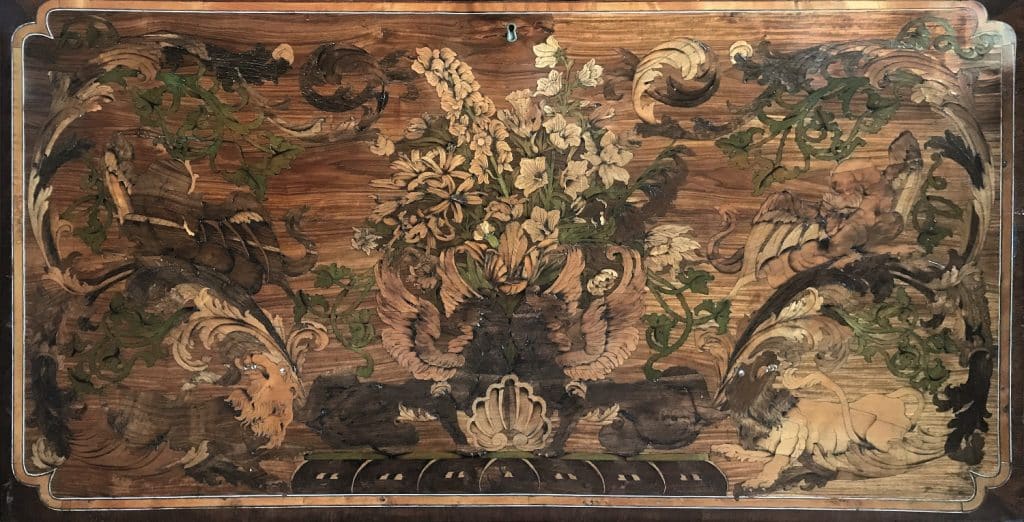
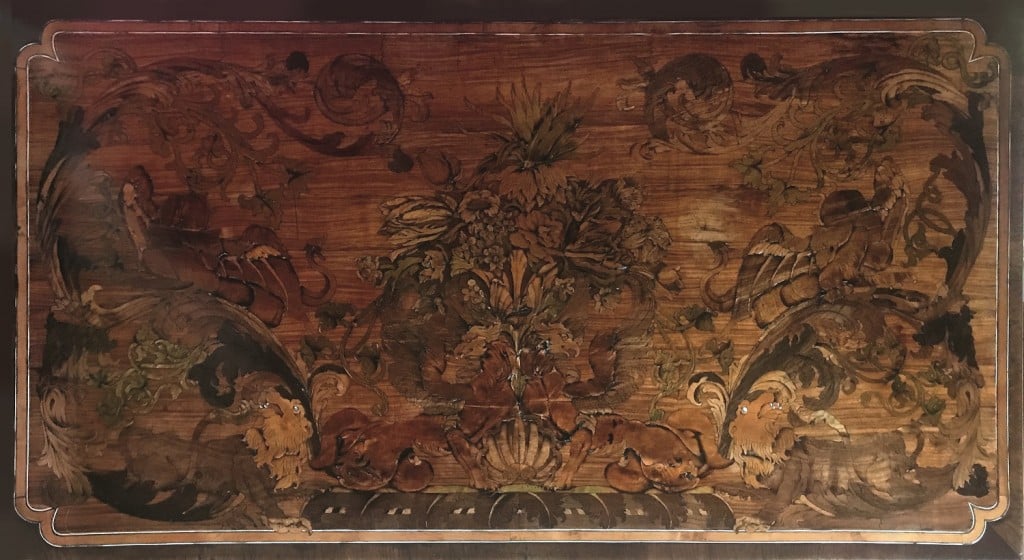
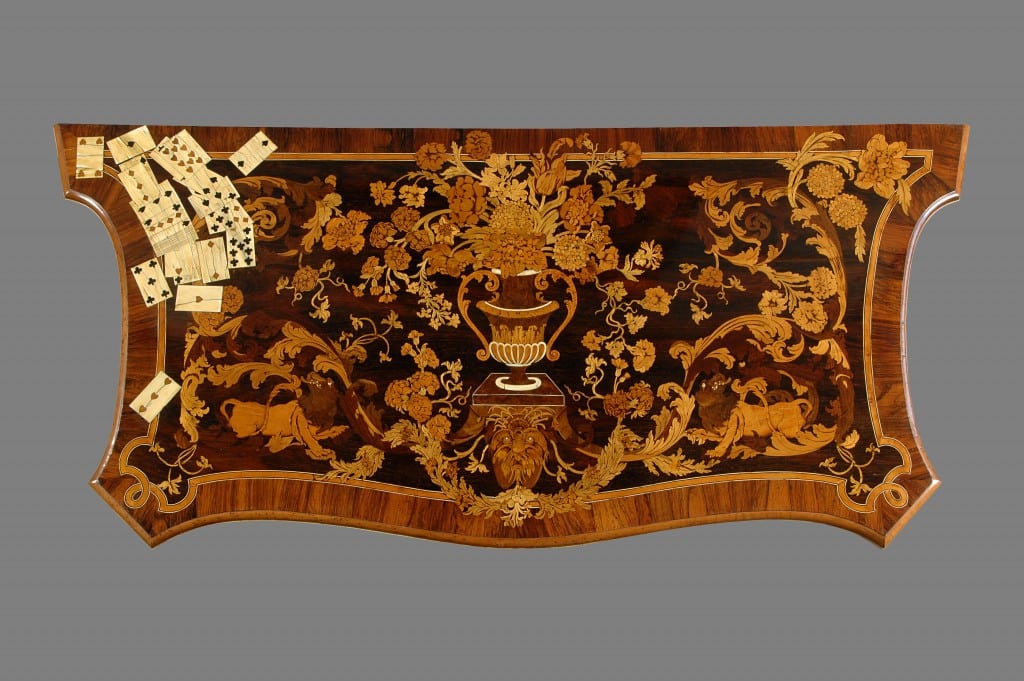
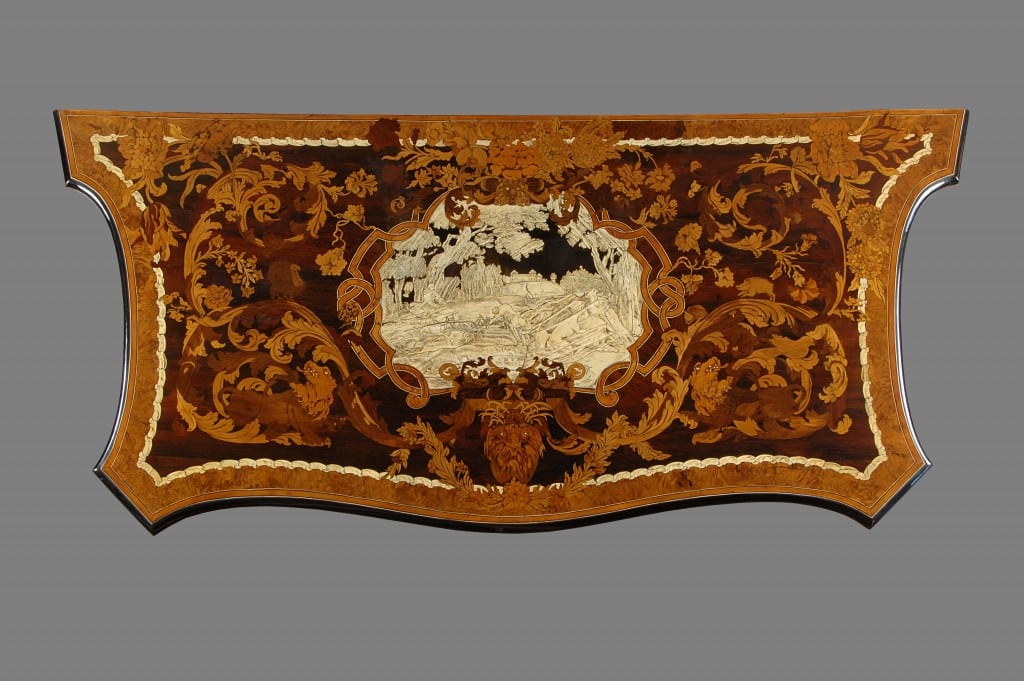
For stylistic reasons, the two panels at Holkham must be dated around 1730 and they constitute a further confirmation of the professional relationship between Piffetti, Daneau and the Parisian master.
These panels are not the only pieces from the prestigious Roman workshop of Lebrun in the UK. The collection at the V&A contains a famous table traditionally attributed to Piffetti, which has a twin now held in the Collezione Intesa San Paolo in Turin.
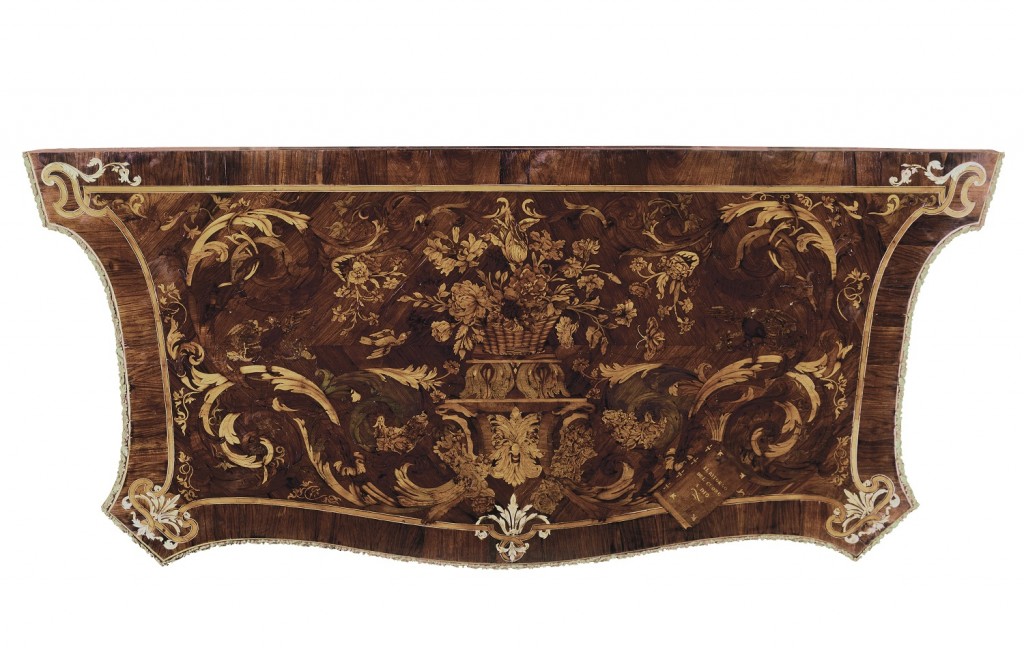
Table top attributed to Lebrun and Piffetti, V&A, London
However, after a specialized comparative analysis between the graphic styles of the table in the V&A and that of the two tables in the Museo Civico d’Arte Antica in Turin made by Piffetti, it is indisputable that they show clear differences. In particular, the acanthus leaves of the table in the V&A are more elongated and have more looped joints than those exclusively made by Piffetti. The attribution of the table at V&A to the Piedmontese cabinet-maker must be rectified: it is a work in which the manual participation of Richard Lebrun, head of the workshop, is prevalent. This is also demonstrated by the superior executive quality of the floral ornamentation. Pietro Piffetti certainly contributed to the realisation of the table, but as a worker.
Other evidence of his presence in the workshop of Lebrun in Rome is the existence of identical birds inlaid on both the table top in the V&A and on a piece of furniture in the Royal Palace of Turin, made by Piffetti in his capacity as cabinet-maker of Charles Emmanuel III between 1731 and 1733.
There is also a strong similarity between the supports of the table at the V&A and the supports of one of the two tables in the Museo Civico d’Arte in Turin, made around 1730-1731. in Rome (as evidenced by the substantial correspondence between the inlays of this table and those of Daneau made in the Eternal City in 1731). In fact, the great volutes used in these supports are stylistically close to ancient models, characteristic of Roman 17th century taste. The other table in the Museo Civico d’Arte Antica, documented in 1734, shows supports of a later style. All these considerations inevitably lead to the conclusion that the V&A table was also made in Rome around 1730.
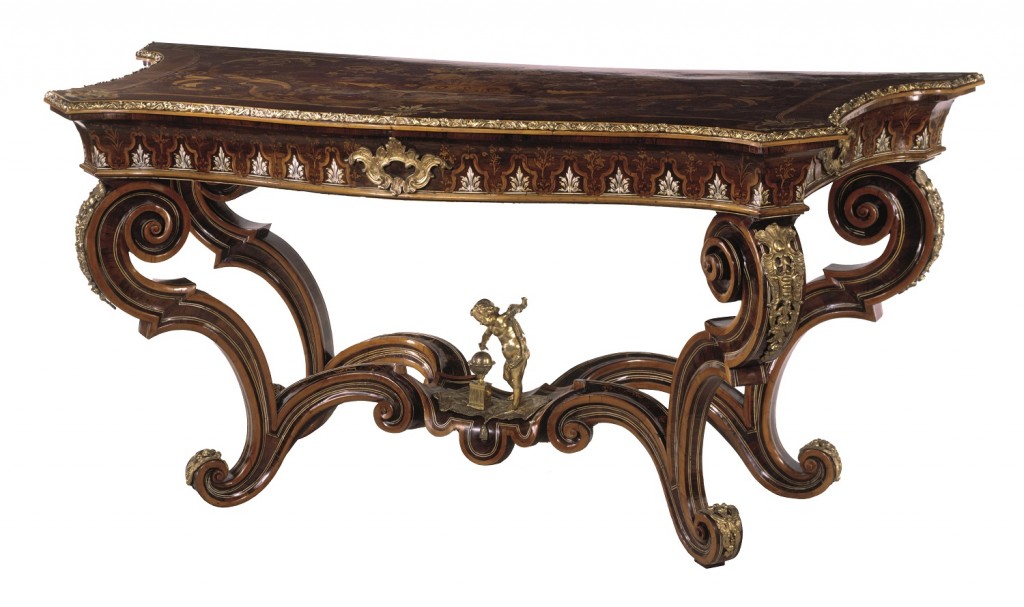
Supports from the table at the V&A (around 1730)
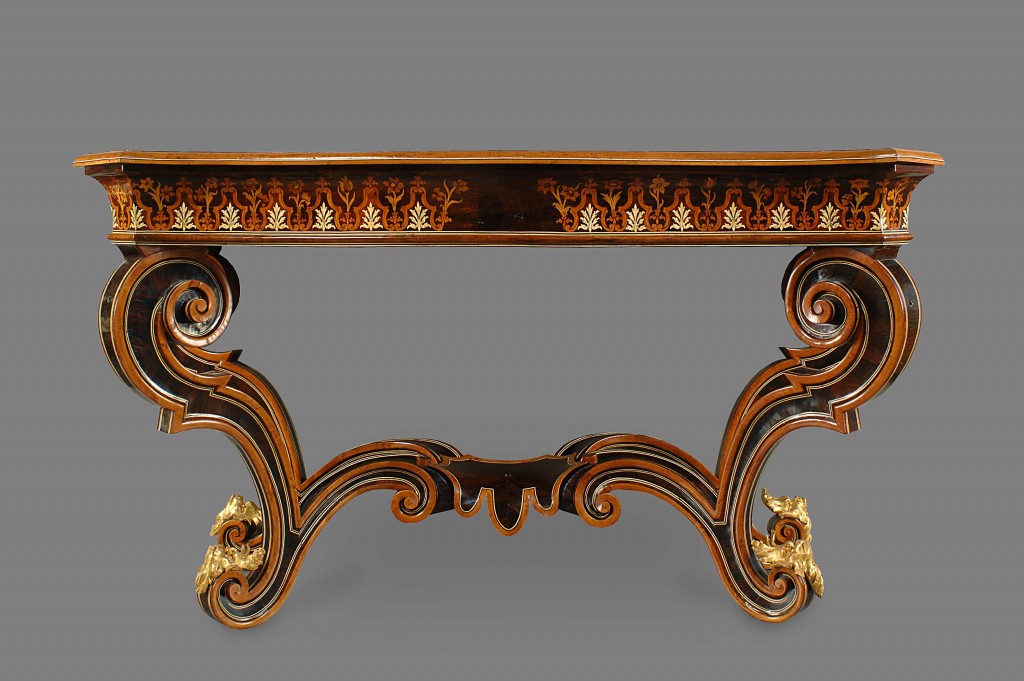
Supports from the table at the Museo Civico d’Arte, Turin (1730-1731)
Returning to the panels at Holkham, sadly their provenance is not documented, but it has been hypothesized that their purchase took place at the behest of Thomas Coke, future 1st Earl of Leicester, who amassed much of the Holkham collection.
Between 1712 and 1718, Coke undertook the traditional Grand Tour, spending much of his time in Italy. During one of his stays in Rome, he had met Giovanni Domenico Campiglia, a leading figure in the graphic arts of 18th Century. Following his return to England, Coke maintained relations with Campiglia, who was involved in the editorial work of De Etruria Regali – the detailed study of Etruscan Civilisation which Coke had undertaken to publish – as a designer.
What could be the connection between the panels and this episode in the life of Thomas Coke?
Giovanni Domenico Campiglia was the nephew of Richard Lebrun and both were very close to each other. Could it be that Coke acquired the panels through Campiglia? We do not know for certain, but it is a tantalising thought.
Because of their historical and artistic importance, these two inlaid panels were published in Claudio Cagliero, La formazione giovanile di Pietro Piffetti, Regio Ebanista alla corte dei Savoia, Hever Edizioni, Ivrea, 2020 (www.caglierorestauri.it/eng/publications).
View all latest blog posts here.
